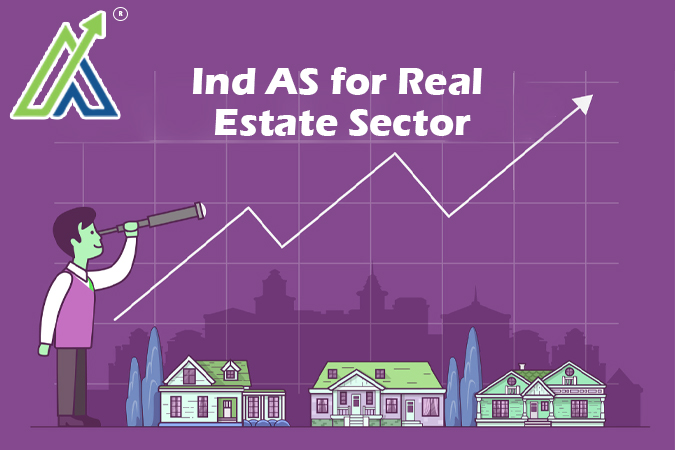Indian Accounting Standards (Ind AS) plays an integral role while shaping the financial reporting for real estate sector. Clarity, Compatibility and credibility regarding financial reporting can be achieved by the implementation of Ind AS. This blog will provide information regarding the complexities of Ind AS for real estate as well as the benefits of it.
Transition to Ind AS
Before the formation of Ind AS, the Indian Generally Accepted Accounting Principle (IGAAP) was used in the real estate sector. The Ministry of Corporate Affairs (MCA) mandates the phased adoption of Ind AS as the objective for interpreting India’s financial reporting with global practices. This transition enhances the growth of the real estate sector through accounting practices for investment property, revenue recognition, and borrowing costs.
Ind AS 115 for Revenue Recognition
Ind AS 115, Revenue from Contracts with Customers, manages the changes made by Ind AS for revenue recognition. This standard recognizes revenue when the customers gain control over goods or services.
Ind AS 40 for Investment Property
For the classification and accounting of investment properties, Ind AS 40 is used. Investment property can be known as property acquired for the sake of rental purposes or capital growth instead of production or supply of goods for administrative purposes.
Ind AS 23 for Borrowing Costs
Ind AS 23 is used for the accounting cure for borrowing costs, focuses on the capitalization of such costs that are clearly attributable to the purchase, construction or production of an eligible asset. Given the capital-intensive nature of their projects, this is an essential component for real estate enterprises.
Ind AS for 110 for Consolidation
Ind AS 110 provides a single control system for consolidating financial statements, replacing the previous system, which had separate models for different types of entities. This standard provides more transparency with respect to control and ensures that the consolidated financial statements provide a thorough view of the entire real estate company’s operations.
Augmented Disclosures
Ind AS makes it compulsory for comprehensive disclosures to improve the clarity of the financial statements. Details regarding contract balances, performance responsibilities, important judgments for the application of the standards, and capital management must be disclosed by real estate companies. Stakeholders’ important information provides better decision-making for disclosures.
Challenges and Opportunities
The transition to Ind AS has the challenges of large system and process changes, massive training tasks, and the potential impacts on the financials reported. On the other hand, it presents real estate firms with several opportunities to standardize international best practices, enhance the caliber of financial reporting, and draw in foreign capital.
Questions to Understand your ability
Ques1: Which Ind AS standard is for revenue recognition?
- Ind AS 40
- Ind AS 23
- Ind AS 115
- Ind AS 110
Ques2: What’s the main point of Ind AS 40?
- Revenue recognition
- Investment property
- Borrowing costs
- Consolidation
Ques3: What does Ind AS 23 deal with?
- Investment property
- Revenue from contracts with customers
- Borrowing costs
- Consolidation of financial statements
Ques4: Which Ind AS handles consolidating financial statements?
- Ind AS 40
- Ind AS 110
- Ind AS 23
- Ind AS 115
Ques5: What’s a big plus for real estate companies adopting Ind AS?
- Simplifying financial statements
- Higher operational costs Greater operational costs
- Better financial reporting quality
- Fewer disclosures
Conclusion
An important turning point in the development of Indian financial reporting would be the adoption of Ind AS in the real estate industry. By providing increased accuracy, comparability, and transparency in the financial statements, Ind AS gives credibility to the real estate industry. The short-term transition may be demanding, but potential long-term gains cannot be denied through such strong and reliable financial reporting.
FAQ’s
To match global practices, improving growth with better accounting for investments, revenue, and borrowing.
It’s about revenue recognition, recording it when customers control the goods or services.
Property for rental income or capital growth, not for making or supplying goods.
It deals with capitalizing borrowing costs, key for their big projects.
A single control model for consolidation, giving a clear view of company operations.
Details on contract balances, performance obligations, major judgments, and capital management.
Big system and changes in processes, broad training, and possible financial effect.
Getting in line with global norms, making financial reports better, and drawing investors from other countries.

